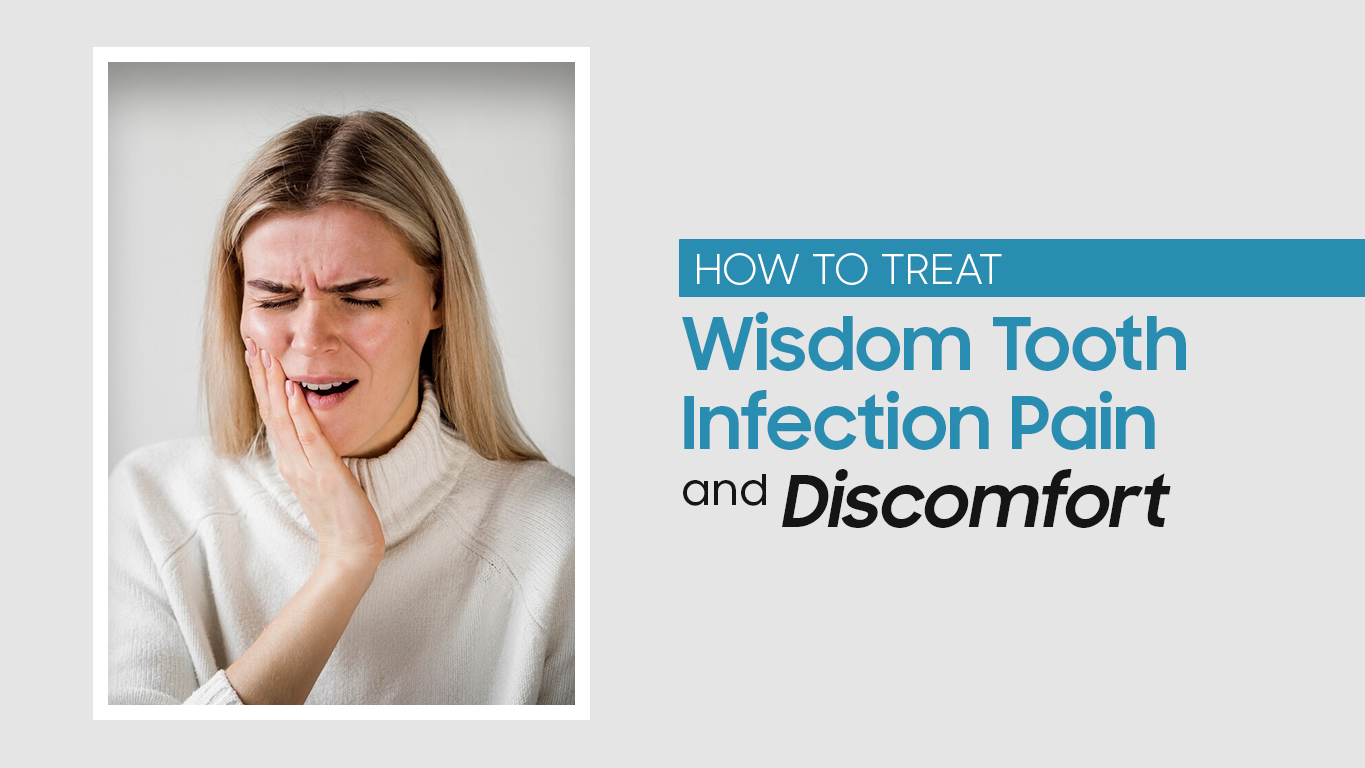Wisdom teeth, or third molars, are the last set of molars to erupt in your late teens to early 20s. Located at the very back of your mouth, wisdom teeth often become impacted, partially emerge, or come in crookedly. This can lead to infection and severe pain. Here’s how to find relief from wisdom tooth infection discomfort:
Signs of Infection
Symptoms that your wisdom tooth may be infected include:
- Pain or soreness around the jaw, ear, or side of the throat
- Red, inflamed, tender gums near the impacted tooth
- Swelling around the tooth, jaw, or cheek region
- Difficulty fully opening the mouth
- Bad breath or foul taste in the mouth
- Headache, neck, and shoulder pain due to mouth and jaw soreness
- Fever, nausea, or fatigue from the infection
These symptoms result from trapped bacteria multiplying in the tissue surrounding the wisdom tooth. Infection occurs because wisdom teeth try to force their way through hardened gums that can’t stretch to accommodate them. The partial eruption also leaves gaps where bacteria enter around the tooth.
Treating Minor Infection at Home
For mild wisdom tooth infection, these remedies provide temporary pain relief until seeing a dentist:
- Saltwater rinses – Dissolve 1/2 teaspoon salt in warm water and swish gently around the painful area. Salt helps reduce inflammation and draw out fluid.
- Over-the-counter pain medication – Anti-inflammatories like ibuprofen ease swelling. Acetaminophen relieves general discomfort. Use as directed.
- Cold compresses – Applying an ice pack or cold compress against the outer cheek near the infected area reduces inflammation.
- Soft, lukewarm foods – Stick to a soft diet like broths, mashed potatoes, and yogurt. Avoid very hot or cold foods against tender gums.
See a dentist promptly if symptoms persist or worsen. An x-ray is needed to determine treatment.
Seeing the Dentist for Infection
If home remedies do not resolve your wisdom tooth infection, it is important to promptly seek professional dental care. The dentist has the proper training, tools, and expertise to accurately diagnose the cause of your symptoms and provide effective treatment. At your appointment, the dentist will start by thoroughly examining your mouth, teeth, and gums. They will look for any swelling, redness, bleeding, tenderness, or pus around the impacted wisdom tooth. The dentist will gently probe the affected area and may press on your jaw joint and neck muscles to pinpoint the source of any pain. Let them know if you feel any discomfort during the exam.
Additionally, they will take a detailed medical history, asking you about any pre-existing conditions, medications you are taking, or allergies they should know about. This helps the dentist best plan your care and treatment approach. X-rays are typically taken as well to get an internal view of your impacted wisdom teeth and assess the level of infection. From the x-rays, the dentist can see if the wisdom tooth is partially erupted, completely trapped, or pushing against other molars. They will also check for any signs of fever, enlarged lymph nodes in your neck, or pus discharge from your gums, which all indicate infection may be spreading.
A culture swab of the area may be done to identify the exact bacteria causing infection. Based on these comprehensive diagnostic tests, your dentist will be able to diagnose the wisdom tooth problem and prescribe appropriate treatment. This may include antibiotics if the infection is advancing, surgically draining any abscesses that have formed on the wisdom tooth roots, extracting part or all of the impacted wisdom tooth, or referring you to an oral surgeon if complications arise requiring specialty care. With timely professional intervention, wisdom tooth infections can be resolved and more serious complications prevented.
Recovering from Extraction
Expect moderate pain, swelling, and bruising after wisdom tooth removal surgery. To manage discomfort:
- Take prescribed antibiotics and pain relievers as directed
- Rinse mouth gently with warm salt water after 24 hours
- Apply cold compresses to reduce facial swelling
- Eat soft foods like soup, eggs, mashed potatoes
- Avoid hard, crunchy foods that could disturb the surgical site
- Rest with the head elevated on pillows to minimize swelling
- Avoid strenuous activity for a few days
Bottom Line
While wisdom tooth infections are quite common, they require professional dental expertise for effective treatment and pain relief. At Carrum Downs Dental Group, our skilled dentists have extensive experience caring for wisdom tooth infections and performing extractions when necessary. We will closely monitor your condition after extraction surgery and are available if any post-operative concerns arise. Don’t hesitate to visit us or give us a call if you have any swelling, worsening pain, bleeding, or other issues following wisdom tooth removal.


